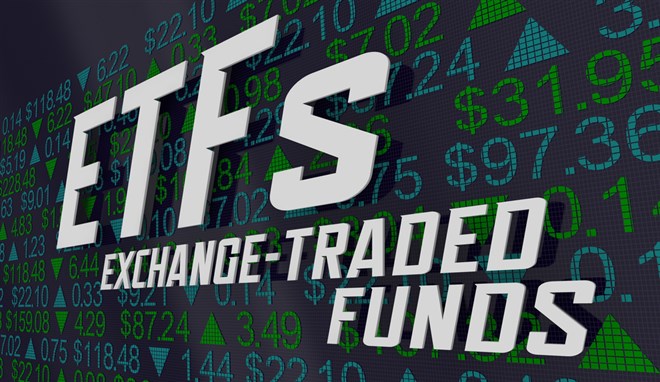
Growth investors are by now quite familiar with the Ark family of actively managed Innovation ETFs. These funds are:
This is not an endorsement of the Ark Funds, but I’m simply using these high-profile funds to illustrate the current popularity of thematic funds.
It’s not only actively managed ETFs that are cashing in on the thematic boom, however.
These thematic funds differ from traditional index ETFs, which track an established benchmark such as the S&P 500, the MSCI EAFE Index or the Bloomberg Barclays Aggregate Index.
To be sure, there are plenty of ways to slice and dice a portfolio containing basic index funds, and that’s not an incorrect way to invest, especially for investors who want a simple-to-manage way of generating retirement income.
However, for those who want to add alpha, or excess return above the market, thematic ETFs could be the ticket. These should not be “buy and hold” investments, but instead, should be used when you have conviction about the prospects for a particular area of the market.
In a 2021 report brokerage and asset manager Fidelity grouped thematic ETFs into five broad categories:
- Disruption: These funds focus on potential long-term shifts in business economics. Technological advances, industry consolidations and evolving consumer preferences may fall under this category.
- Megatrends: This is a related concept. Megatrend funds are concentrated on long-term profit growth, driven by forces such as resource scarcity or changing demographics. For example, a megatrend could be an aging population.
- Environmental, Social, and Governance (ESG): This fund category has been growiing rapidly in recent years. According to Fidelity, these funds It focus on longer-term trends such as sustainable business, social or human capital and corporate governance. ESG investors also have a built-in mechanism, in the form of proxy votes, to hold companies accountable for actions affecting these areas.
- Differentiated Insights: These funds hold securities that adhere to a specific description that may not be easily accessible to investors without the mechanism of a fund. Fidelity uses the examples of funds focusing on founder-led companies, or stocks with higher-than-average debt.
- Outcome Oriented: These are funds managed to a specific investing objective, such as a target turn or risk profile, as measured by volatility. These can be good investments in a portfolio that’s fine-tuned to deliver a specific level of income, or perhaps one that’s more focused on tax management.
These fund categories can certainly be included in an asset allocation strategy, or used outside an allocation in an effort to add excess return in targeted areas.
I don’t believe investors have to choose between passive and active strategies within their portfolio. There’s no reason why both can’t be included.
As a very basic example (not a recommendation), you could own the Vanguard Russell 3000 ETF (NASDAQ: VTHR) to gain exposure to the broad U.S. equity market. To balance that out, you could add the iShares Core U.S. Aggregate Bond ETF (NYSEARCA: AGG). You also add the Vanguard FTSE All-World ex-US Index Fund (NYSEARCA: VEU) for international exposure.
So you’ve done the practical allocation here. But you believe that international companies focused on tech innovation will boost your overall return, so you add the Goldman Sachs Innovate Equity ETF (NYSEARCA: GINN), which seeks to provide exposure to the beneficiaries of technological innovation across all sectors, geographies and market capitalizations.
That last one isn’t necessarily part of your ongoing allocation, and you can trade in and out or consider it a long-term hold, whichever makes the most sense for your investment philosophy and financial goals.
Thematic ETFs of all kinds can be used to augment your other allocations. You don’t need to just pick one, and you have the flexibility to determine your holding period and the percentage allocations.
Before you make your next trade, you'll want to hear this.
MarketBeat keeps track of Wall Street's top-rated and best performing research analysts and the stocks they recommend to their clients on a daily basis.
Our team has identified the five stocks that top analysts are quietly whispering to their clients to buy now before the broader market catches on... and none of the big name stocks were on the list.
They believe these five stocks are the five best companies for investors to buy now...
See The Five Stocks Here
Looking to profit from the electric vehicle mega-trend? Enter your email address and we'll send you our list of which EV stocks show the most long-term potential.
Get This Free Report
Like this article? Share it with a colleague.
Link copied to clipboard.